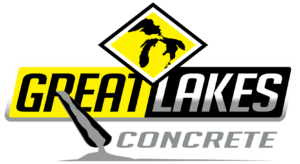Frequently Asked Questions
Check out our frequently asked questions concerning our concrete pouring and sealing services.
If you still have questions, please feel free to call us at 519 895-6425 for more information.
Yes, we offer a 1-year limited warranty with all projects.
We recommend that you wait at least 2 days before you walk on your freshly poured concrete and at least 7-10 days before you drive on it.
We don't apply the sealer but we do stock the product for the customer. There are two types of sealer. Seal and cure sealer can go on your new concrete within 5 days of the concrete being poured. A full gloss sealer goes on 6 months to a year down the road.
We recommend that you seal all types of concrete at least once per year. Stamped concrete has to be sealed twice per year; Spring and Fall. Stamped concrete requires the most maintenance.
A good base is everything!
We excavate to a maximum 10inch depth, we add A gravel as needed, we then use a diesel plate tamper to pack down the earth to ensure a firm base.
Concrete will crack and crumble if it’s not poured over a solid, stable base. Bringing in 4 to 6-in. of a good compact-able base is a good rule of thumb, but the exact amount of base to any concrete project depends on the condition of the existing soil, the climate, and what you plan to park on your driveway, or how you utilize your project.
You may be able to pour directly over sandy or gravelly soil without bringing in any additional base. But if you live in a cold climate, are pouring over heavy clay or organic soil, or plan to park heavy vehicles on the driveway, you may want to increase the base layer to 10 or 12-in. This will be discussed as the excavation commences, as each project and site has different needs.
We reinforce the concrete by using a wire mesh within the concrete. In some cases, we add fiber mesh in the concrete at the home owner’s expense.
Often people use the two terms cement and concrete interchangeably, believing there is no difference between the two. However, cement is actually an ingredient of concrete. Concrete is essentially a blend of aggregates and paste. The aggregates consist of sand gravel and/or crushed stone; the paste is water and cement. Cement comprises 10 to 15 percent of the concrete mix. Over many years the cement and water harden bringing the aggregates closer together, making the concrete stronger, a process known as hydration. This process continues on for a very long time, therefore concrete keeps getting stronger over many years.
Cracks will most definitely happen, it's not about if, it's always when.
Concrete’s volume will change slightly after it has cured. Typically concrete shrinks about 1/16 of an inch over 10 feet.
Freeze-thaw cycles will affect and adjust your concrete, as it's essentially a floating slab, once the frost fully leaves the ground come springtime and warmer weather, cracks will become smaller in nature as the concrete shifts.
We add expansion cuts throughout each and every job to encourage the concrete to crack in a more uniform, straight line at the joint when the concrete shrinks and changes its volume. Hence why we call them "control joints". They are employed to help try to control where the concrete will inevitably crack.
The temperature is a very key part of the curing process. On hot days when concrete is curing, the heat causes excessive moisture to evaporate from the concrete. However, on the other hand, if the temperature drops too close to freezing, hydration will occur at a snail's pace. This is why we always recommend using a wet-curing method. Call to ask us more about the methods we employ to protect new concrete from the summer heat.
Air-entrained concrete is ordinary concrete that contains controlled amounts of air in the form of microscopic bubbles. These intentionally entrained air bubbles are extremely small. This creates many tiny air pockets in the concrete. These air pockets ease internal strain and pressure on the concrete by allowing water a place to expand when it freezes. The amount of air we use in the mix varies but is typically between 4 percent and 8 percent. The primary benefit of entrained air in hardened concrete is the resistance it offers to scaling caused by de-icing salts or chemicals and freeze-thaw damage.
Yes, we do. Please request one.
